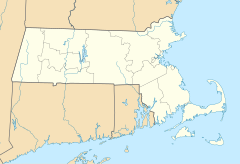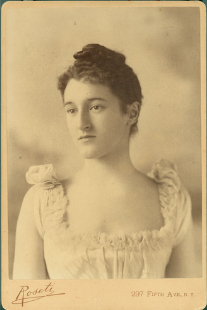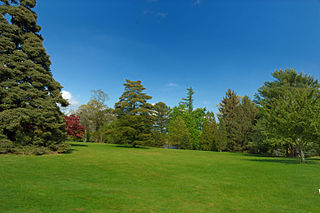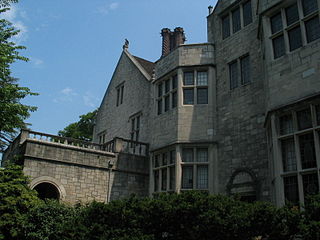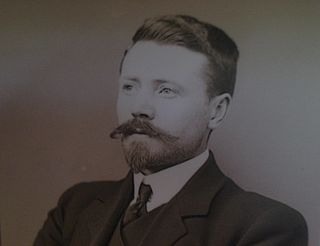| Case Estates | |
|---|---|
 General view of the Case Estates | |
| Type | Botanical Garden |
| Location | Weston, Massachusetts |
| Coordinates | 42°21′29″N71°17′57″W / 42.3580°N 71.2991°W Coordinates: 42°21′29″N71°17′57″W / 42.3580°N 71.2991°W |


The Case Estates is a botanical garden located at 135 Wellesley Street, Weston, Massachusetts. Measuring 65 acres (260,000 m2), the estates were at one time the active plant nurseries of the Arnold Arboretum.
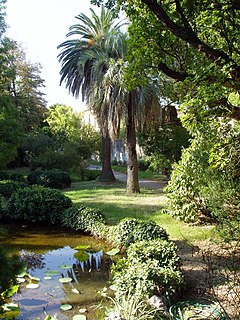
A botanical garden or botanic garden is a garden dedicated to the collection, cultivation, preservation and display of a wide range of plants labelled with their botanical names. It may contain specialist plant collections such as cacti and other succulent plants, herb gardens, plants from particular parts of the world, and so on; there may be greenhouses, shadehouses, again with special collections such as tropical plants, alpine plants, or other exotic plants. Visitor services at a botanical garden might include tours, educational displays, art exhibitions, book rooms, open-air theatrical and musical performances, and other entertainment.
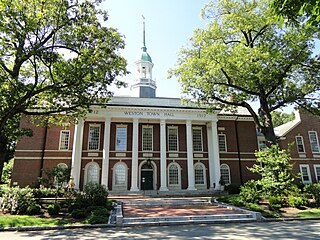
Weston is a town in Middlesex County, Massachusetts, about 15 miles west of downtown Boston. The population of Weston, as of June 2017, was 11,389.

Massachusetts, officially the Commonwealth of Massachusetts, is the most populous state in the New England region of the northeastern United States. It borders on the Atlantic Ocean to the east, the states of Connecticut and Rhode Island to the south, New Hampshire and Vermont to the north, and New York to the west. The state is named after the Massachusett tribe, which once inhabited the east side of the area, and is one of the original thirteen states. The capital of Massachusetts is Boston, which is also the most populous city in New England. Over 80% of Massachusetts's population lives in the Greater Boston metropolitan area, a region influential upon American history, academia, and industry. Originally dependent on agriculture, fishing and trade, Massachusetts was transformed into a manufacturing center during the Industrial Revolution. During the 20th century, Massachusetts's economy shifted from manufacturing to services. Modern Massachusetts is a global leader in biotechnology, engineering, higher education, finance, and maritime trade.
Contents
The estates began in 1863 when James Case acquired its core property. From 1909 onwards his daughter, Miss Marian Roby Case, acquired adjoining property to establish Hillcrest Farms, which she operated from 1909 to 1942 as an experimental fruit and vegetable farm intended to "work up the scientific side of agriculture and provide summer employment and practical education for local youth." In 1942 she left the estate to Harvard University's Arnold Arboretum, which subsequently sold most of its houses. The Case family mansion is now used as Weston school offices.

Harvard University is a private Ivy League research university in Cambridge, Massachusetts, with about 6,700 undergraduate students and about 15,250 post graduate students. Established in 1636 and named for its first benefactor, clergyman John Harvard, Harvard is the United States' oldest institution of higher learning, and its history, influence, and wealth have made it one of the world's most prestigious universities.
Today the property is a semi-private reservation with lovely gardens and rare plant specimens. The majority of the site is an evergreen forest in semi-natural state, with pleasant walking trails. It also contains a fine rhododendron display garden maintained by the Massachusetts Chapter of the American Rhododendron Society.

Rhododendron is a genus of 1,024 species of woody plants in the heath family (Ericaceae), either evergreen or deciduous, and found mainly in Asia, although it is also widespread throughout the highlands of the Appalachian Mountains of North America. It is the national flower of Nepal as well as the state flower of West Virginia and Washington. Most species have brightly coloured flowers which bloom from late winter through to early summer.
The American Rhododendron Society (ARS) is a non-profit organization whose mission is to encourage interest in, and disseminate information about, the genus Rhododendron. Members' experience ranges from novice to expert. The Society provides a medium through which people interested in rhododendrons and azaleas can communicate and cooperate with others via its publications, events, local and regional meetings and international conferences. Society activities include public education, plant sales, flower shows, seed exchanges, and scientific research. It has chapters throughout the United States and Canada, as well as in Denmark, Finland, the Netherlands, Scotland, Sikkim, and Sweden.
One interesting feature of the property is its remarkable stone wall, which in 1911 was a birthday present from Miss Case to her sister Louisa. It is roughly 10 feet (3.0 m) high, up to 6 feet (1.8 m) thick, and 200 feet (61 m) long. It has been described as "the largest [or longest] free-standing dry wall in New England."

New England is a geographical region composed of six states of the northeastern United States: Maine, Vermont, New Hampshire, Massachusetts, Rhode Island, and Connecticut. It is bordered by the state of New York to the west and by the Canadian provinces of New Brunswick and Quebec to the northeast and north, respectively. The Atlantic Ocean is to the east and southeast, and Long Island Sound is to the south. Boston is New England's largest city as well as the capital of Massachusetts. The largest metropolitan area is Greater Boston with nearly a third of the entire region's population, which also includes Worcester, Massachusetts, Manchester, New Hampshire, and Providence, Rhode Island.
In 2006, Harvard University made the decision to sell the property, and on November 8, a Special Town Meeting of the Town of Weston voted to buy the estate for $22.5 million. Selectmen have said that the town may sell off as many as 10 parcels to recoup part of the cost. [1]
The discovery of contaminants, dating back to 1900 when the land was used as an apple orchard, and disagreements over the remediation plan stalled the acquisition. [2] In March 2015, the Arboretum and the Town of Weston announced that an agreement had been reached that allows for the sale of the Case Estates to the Town of Weston. [3]
